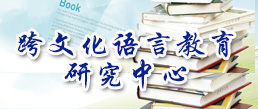外院网讯(通讯员:单文茜)2025年3月30日,指导老师罗晓黎、王文明带领外院24级英语荆楚优师班的同学踏入坐落于武昌紫阳湖公园内的汉剧博物馆,开启了一场沉浸式的非遗汉剧探索之旅,零距离品味地方非物质文化遗产——汉剧的独特韵味与深厚底蕴。
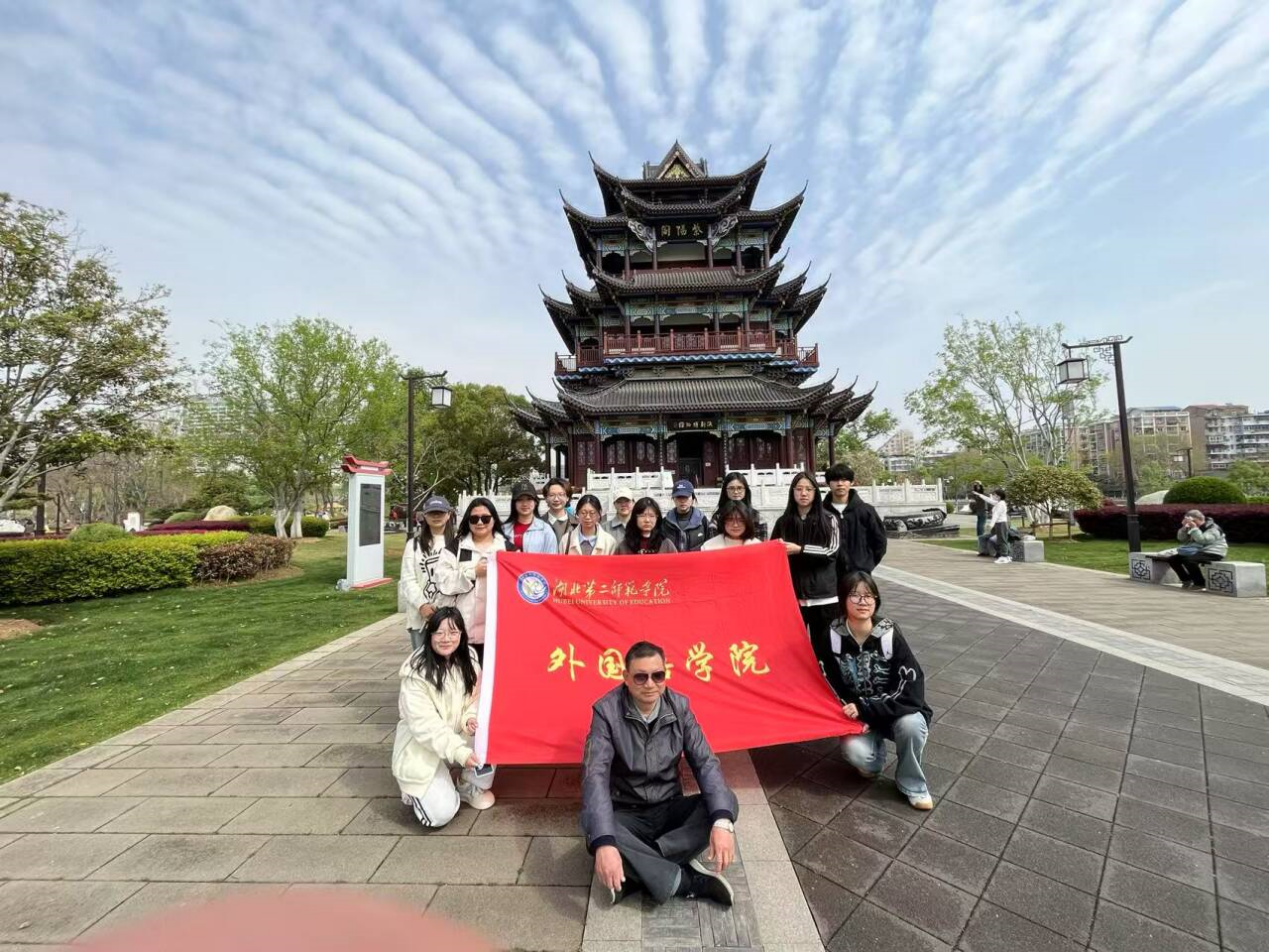
刚迈进博物馆的大门,仿佛踏入了一个汉剧艺术的奇幻世界,浓郁醇厚的汉剧氛围瞬间将众人包围。一件件绣工精湛绝伦的汉剧蟒袍、帔衣有序排列,蟒纹蜿蜒灵动、凤纹栩栩如生,在柔和灯光的轻抚下,闪烁着丝质独有的迷人光泽。这些华服的制作工艺极为繁复,从最初的精心选料,到精准裁剪,再到一针一线的刺绣,每一个步骤都倾注着老工匠们无数的心血与精湛技艺,承载着他们对传统工艺的坚守与热爱。
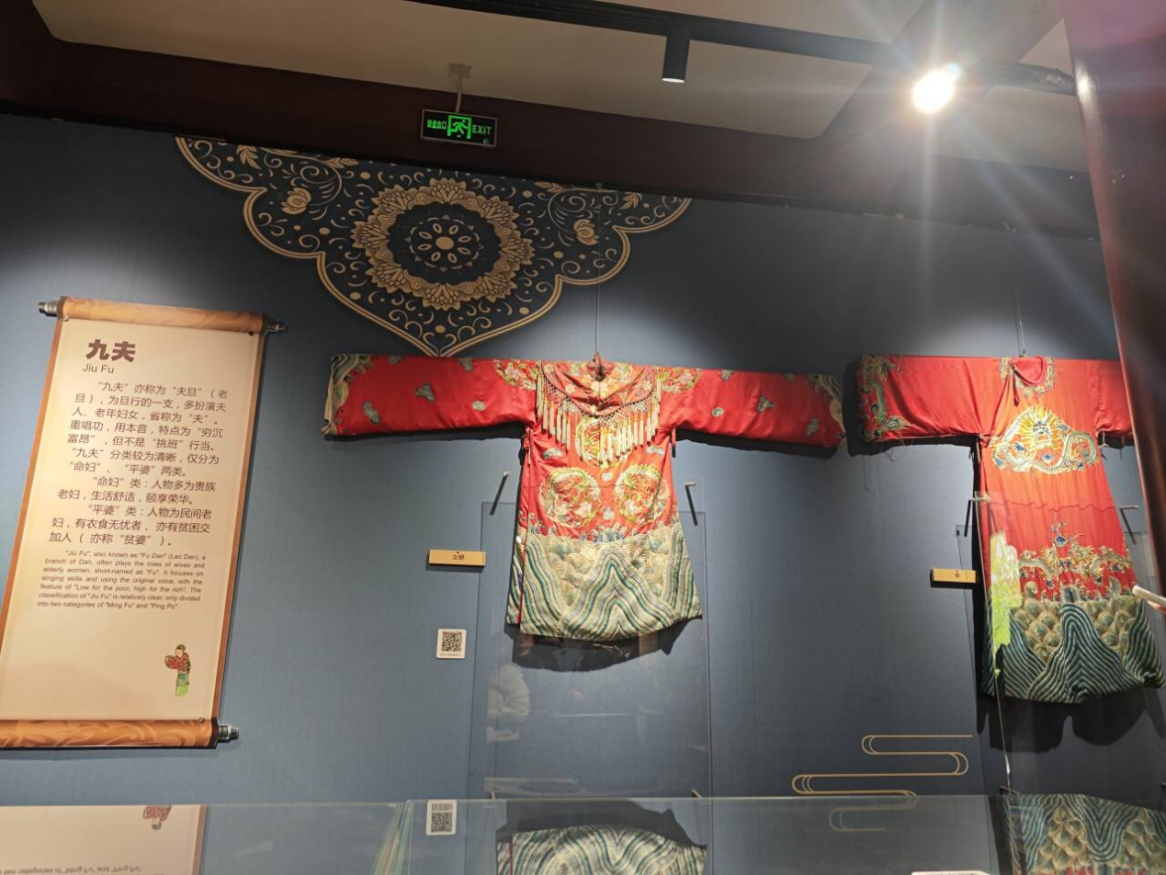
一旁的墙面,挂满了形态各异、色彩对比强烈的汉剧脸谱。红脸的关羽,那是忠义的化身,红色在脸谱上跳跃,诉说着义薄云天的故事;黑脸的包公,象征着刚正不阿,黑色沉稳庄重,彰显着公正无私的品格;白脸的曹操,寓意着奸诈狡猾,白色的冷峻色调将人物的狡黠刻画得入木三分。绘制脸谱时,艺人需全神贯注,精准把控线条的粗细变化、色彩的过渡融合,稍有差池便会影响整体效果,只有如此,才能呈现出独一无二、极具艺术感染力的脸谱。
古老的汉剧乐器,如板鼓、大锣、小锣、钹等静静陈列在展柜之中。这些看似普通的器具,实则蕴含着无尽的能量。在技艺娴熟的艺人手中,它们能敲打出千变万化、极具韵律的节奏。激烈时,似金戈铁马,为紧张的武戏场景烘托出剑拔弩张的氛围;舒缓时,如潺潺流水,为抒情唱段增添悠然的意境;悲壮时,则像秋风呜咽,将角色的悲苦心境渲染得淋漓尽致。馆内还珍藏着许多珍贵的历史文献,泛黄的书页虽已脆弱,却承载着汉剧从古至今的发展脉络,每一个文字、每一幅插图,都是汉剧艺术传承的重要见证,诉说着岁月的沧桑与变迁。
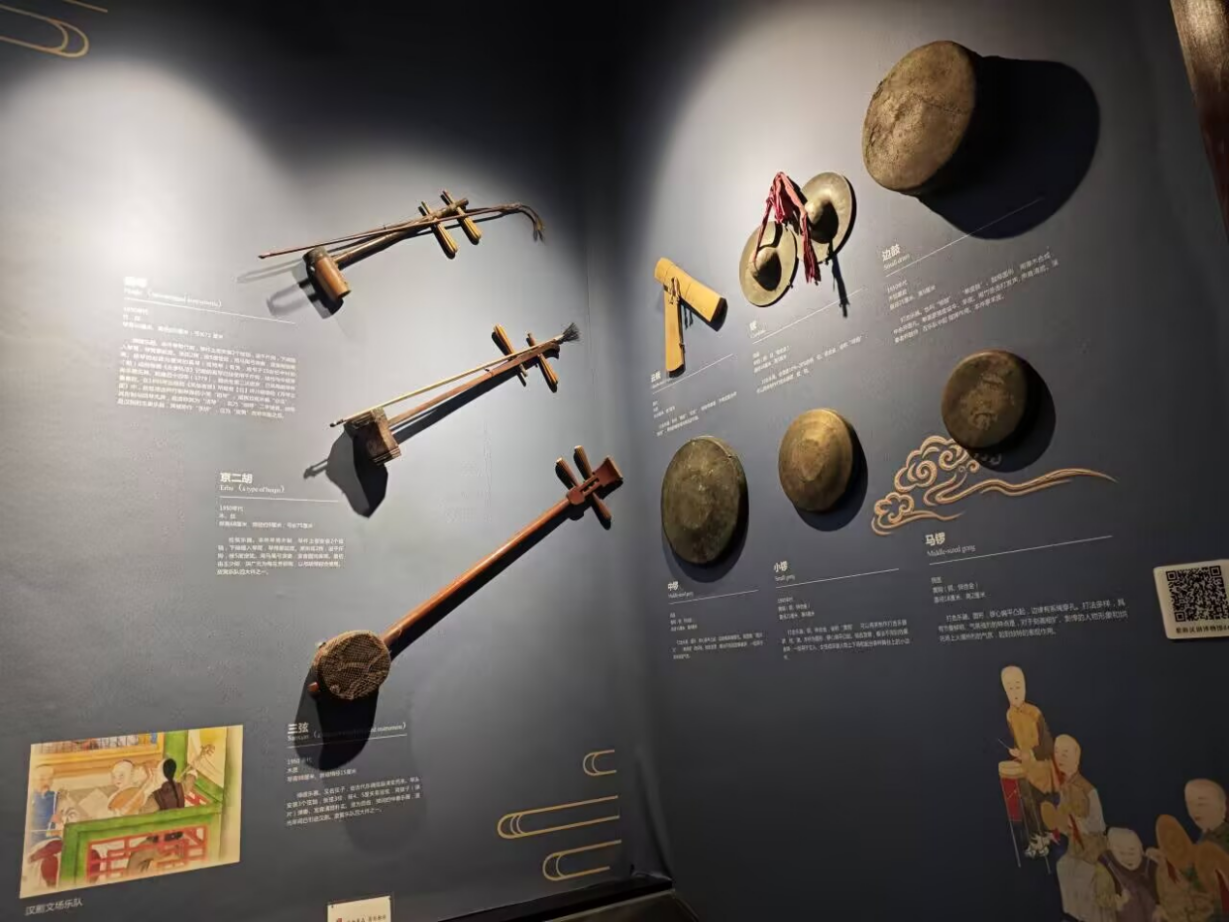
在参观的过程中,博物馆工作人员热情地化身“文化使者”,为大家细致入微地讲解汉剧的表演精髓。汉剧唱腔丰富多样,宛如一座音乐的宝库。西皮腔高亢激昂,旋律起伏较大,犹如汹涌澎湃的海浪,适合表现激昂、悲愤的情绪,当演员唱出西皮腔时,仿佛能让人感受到角色内心的波澜壮阔;二黄腔则委婉深沉,节奏较为平稳,恰似山间缓缓流淌的溪流,常用于表达抒情、沉稳的情感,那婉转的曲调能将人物细腻的情感娓娓道来。汉剧角色行当划分细致,“一末、二净、三生、四旦、五丑、六外、七小、八贴、九夫、十杂”,每个行当都有其独特的表演规范和技巧,从服饰装扮到动作神态,都有着严格的要求。
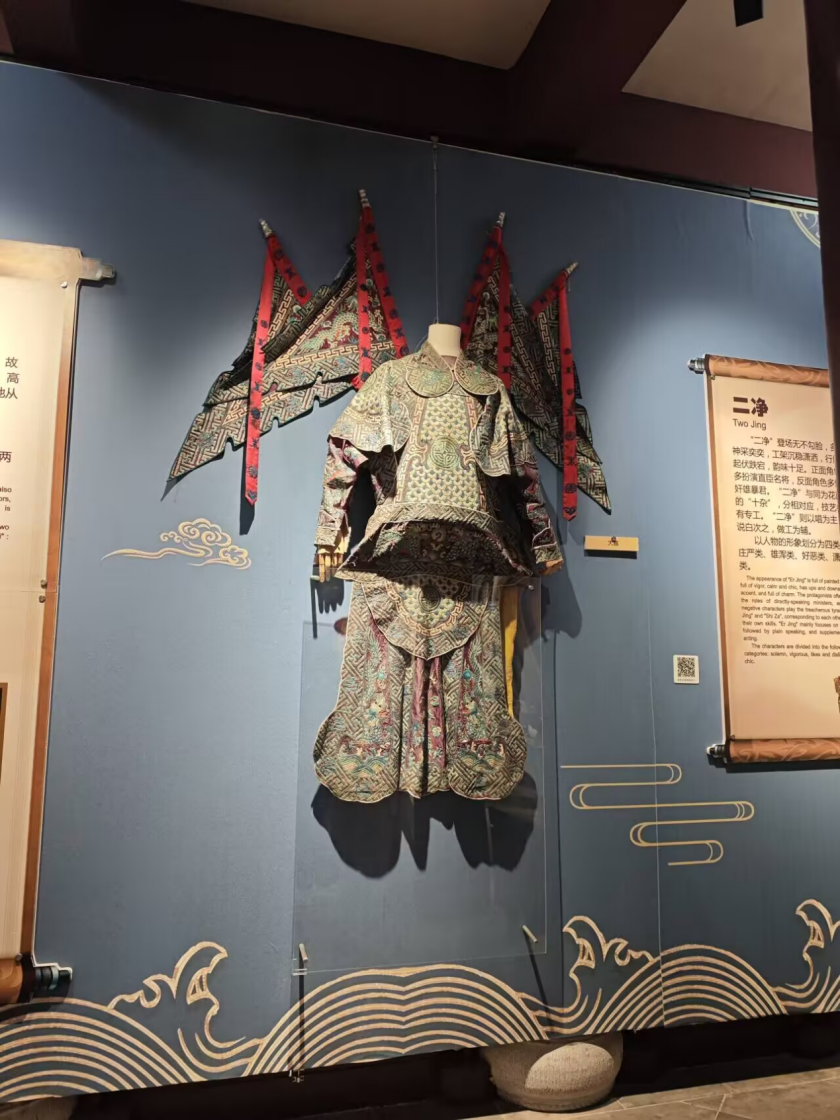
汉剧博物馆门前,那座敞亮的紫阳戏台熠熠生辉,不仅是传统艺术展示的窗口,更是文化传承的桥梁。据悉,此戏台定期上演精彩剧目,观众可免费观赏,这一举措极大地拉近了传统艺术与普通群众的距离,让更多人有机会亲身感受汉剧的独特韵味,从而在潜移默化中提升艺术鉴赏力,为汉剧的传承与发展筑牢了坚实的群众根基。
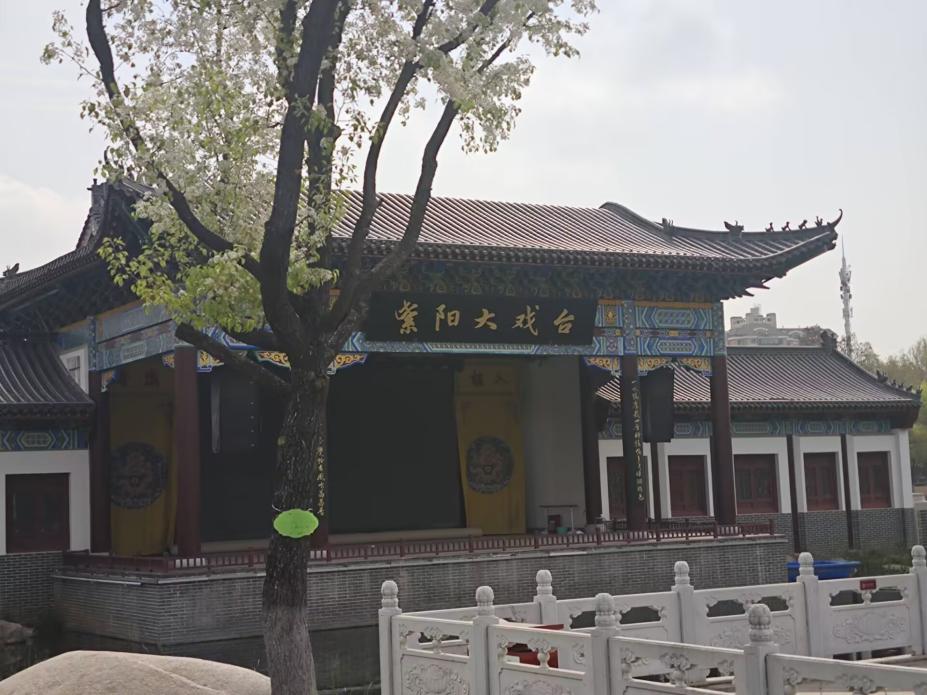
此次参观活动,不仅使同学们沉浸于汉剧这一非物质文化遗产的瑰丽世界,深刻体会到其独特的艺术魅力,更激发了他们对非遗保护与传承的深切关注与深刻思考。同学们纷纷表示,将以此次活动为契机,进一步了解和汉剧和其它非遗项目,做非遗文化的传播者和守护者。
(图片:罗晓黎 审核:刘晖)
Exploring the Intangible Heritage of Han Opera: Immersing in the Charm of Traditional Culture
(By Correspondent Shan Wenqian) On March 30, 2025, under the guidance of teachers Ms. Luo Xiaoli and Mr. Wang Wenming, the students from the 2024 English Jingchu Excellent Teachers Class of the Foreign Languages School embarked on an immersive journey into the world of Han Opera at the Han Opera Museum located in Wuchang's Ziyang Lake Park. The visit offered a firsthand experience of the unique charm and profound heritage of Han Opera, a local intangible cultural treasure.
Upon entering the museum, visitors were instantly enveloped by the rich artistic atmosphere of Han Opera. Exquisitely embroidered "mangpao" (ceremonial robes) and "peiyi" (capes) adorned with intricate dragon and phoenix motifs stood in orderly rows. Under soft lighting, the silk fabrics shimmered with a captivating luster, reflecting the meticulous craftsmanship of veteran artisans. From material selection and precise cutting to the needlework of every stitch, these garments embody the dedication and mastery of traditional techniques passed down through generations.
Adjacent walls were adorned with vibrant Han Opera facial makeup masks, each showcasing distinct characters. The red-faced Guan Yu symbolizes loyalty, his crimson hue radiating righteousness; the black-faced Bao Zheng represents integrity, his somber tone embodying impartiality; the white-faced Cao Cao signifies deceit, his cold palette vividly portraying cunning. Artists must focus intently, balancing line thickness and color transitions, as even minor errors can compromise the artistic effect. Only through such precision can these masks achieve their unique, emotionally resonant expressions.
Ancient Han Opera instruments, including the bangu drum, large gong, small gong, and cymbals, were displayed in glass cabinets. In skilled hands, these instruments produce rhythmic patterns of infinite variation—fierce beats evoking battlefield tensions, soothing rhythms accompanying lyrical melodies, and tragic tones conveying profound sorrow. The museum also houses fragile historical documents, their yellowed pages bearing witness to Han Opera's evolution. Every word and illustration records the art's journey through time.
During the tour, museum staff enthusiastically served as "cultural ambassadors," elaborating on Han Opera's performance essence. Its vocal music is a treasure trove of diversity. The xipi melody, with its soaring, emotional intensity, resembles turbulent waves, ideal for expressing passion or grief. The erhuang melody, by contrast, flows like a mountain stream, its gentle rhythms conveying tender emotions. Han Opera's role categories—"Yimo, Erjing, Sansheng, Sidan, Wuchou, Liuwai, Qixiao, Batie, Jiufu, Shiza"—each possess unique performance norms, from costumes to gestures, governed by strict artistic standards.
Outside the museum, the Ziyang Stage gleams as a beacon of cultural heritage. Regular free performances here bridge traditional art with the public, allowing audiences to appreciate Han Opera's nuances and fostering aesthetic appreciation. This initiative strengthens the foundation for its preservation and development.
The visit not only immersed students in the splendor of Han Opera but also ignited their commitment to safeguarding intangible heritage. Many expressed intentions to deepen their understanding of Han Opera and other cultural treasures, vowing to become ambassadors and guardians of this legacy.



